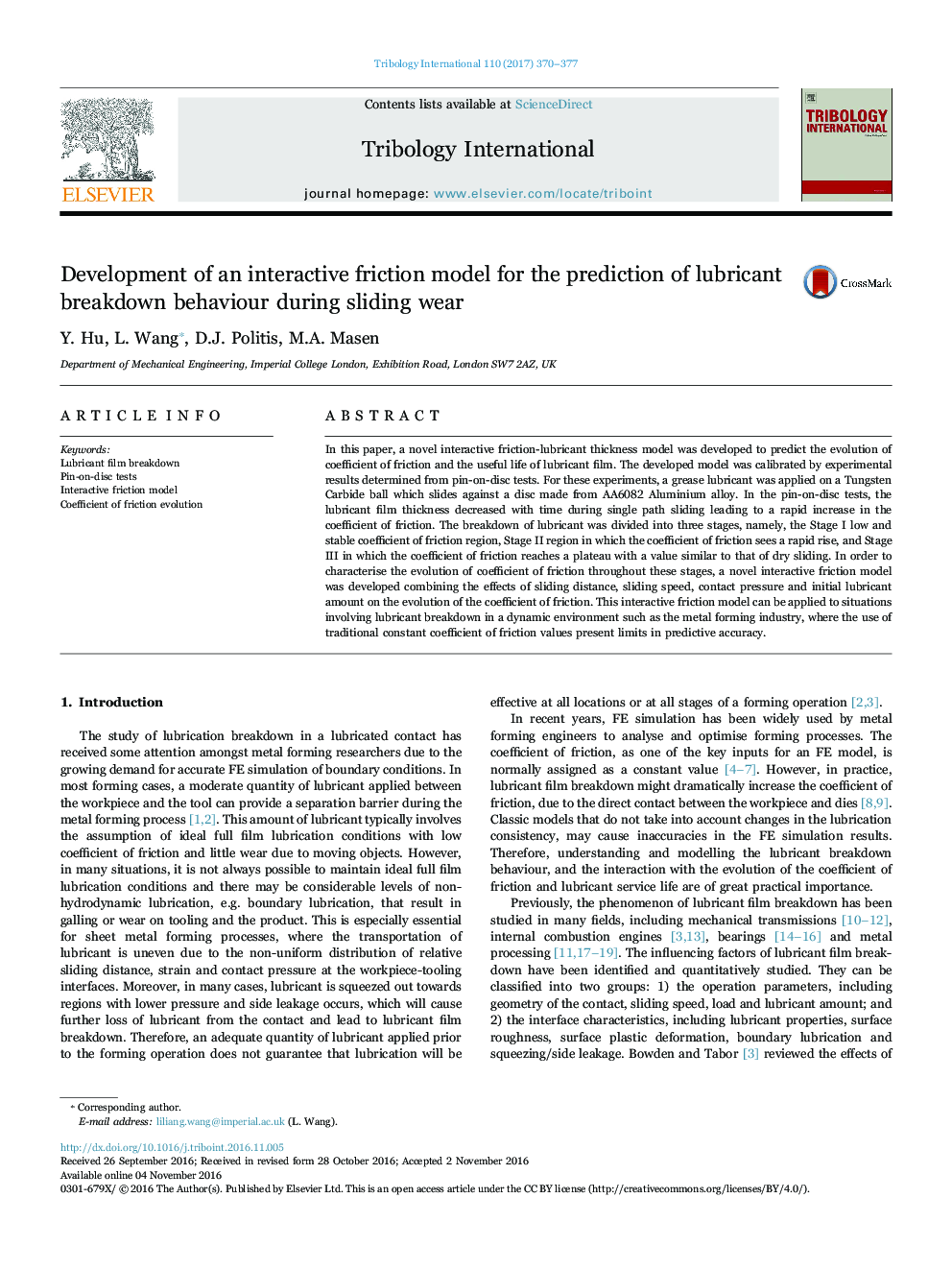| Article ID | Journal | Published Year | Pages | File Type |
|---|---|---|---|---|
| 4986099 | Tribology International | 2017 | 8 Pages |
â¢The lubricant film breakdown phenomenon was studied quantitatively.â¢An interactive friction model between COF and lubrication condition was developed.â¢The full friction coefficient evolution was modelled.
In this paper, a novel interactive friction-lubricant thickness model was developed to predict the evolution of coefficient of friction and the useful life of lubricant film. The developed model was calibrated by experimental results determined from pin-on-disc tests. For these experiments, a grease lubricant was applied on a Tungsten Carbide ball which slides against a disc made from AA6082 Aluminium alloy. In the pin-on-disc tests, the lubricant film thickness decreased with time during single path sliding leading to a rapid increase in the coefficient of friction. The breakdown of lubricant was divided into three stages, namely, the Stage I low and stable coefficient of friction region, Stage II region in which the coefficient of friction sees a rapid rise, and Stage III in which the coefficient of friction reaches a plateau with a value similar to that of dry sliding. In order to characterise the evolution of coefficient of friction throughout these stages, a novel interactive friction model was developed combining the effects of sliding distance, sliding speed, contact pressure and initial lubricant amount on the evolution of the coefficient of friction. This interactive friction model can be applied to situations involving lubricant breakdown in a dynamic environment such as the metal forming industry, where the use of traditional constant coefficient of friction values present limits in predictive accuracy.
